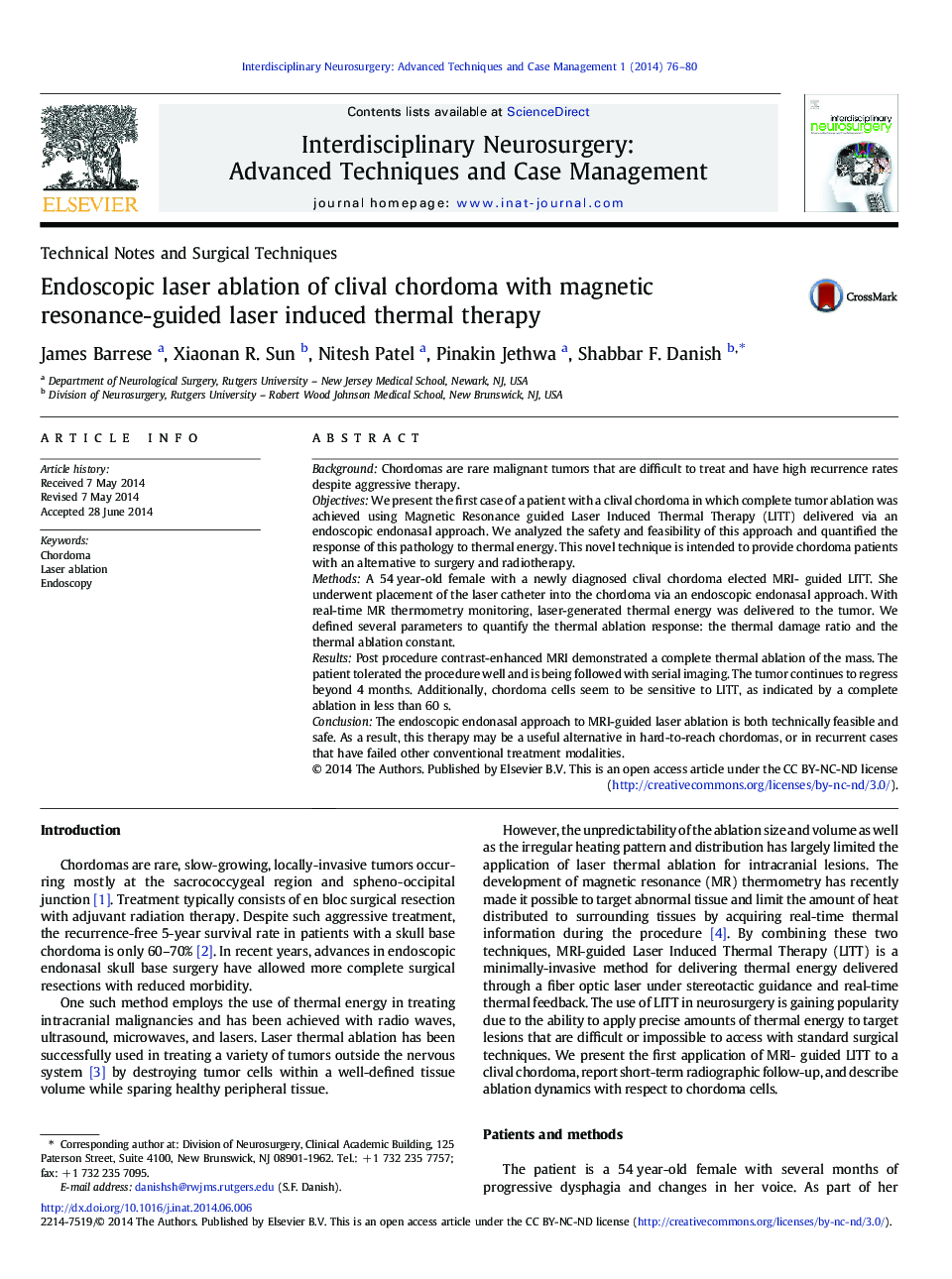| Article ID | Journal | Published Year | Pages | File Type |
|---|---|---|---|---|
| 3057875 | Interdisciplinary Neurosurgery | 2014 | 5 Pages |
BackgroundChordomas are rare malignant tumors that are difficult to treat and have high recurrence rates despite aggressive therapy.ObjectivesWe present the first case of a patient with a clival chordoma in which complete tumor ablation was achieved using Magnetic Resonance guided Laser Induced Thermal Therapy (LITT) delivered via an endoscopic endonasal approach. We analyzed the safety and feasibility of this approach and quantified the response of this pathology to thermal energy. This novel technique is intended to provide chordoma patients with an alternative to surgery and radiotherapy.MethodsA 54 year-old female with a newly diagnosed clival chordoma elected MRI- guided LITT. She underwent placement of the laser catheter into the chordoma via an endoscopic endonasal approach. With real-time MR thermometry monitoring, laser-generated thermal energy was delivered to the tumor. We defined several parameters to quantify the thermal ablation response: the thermal damage ratio and the thermal ablation constant.ResultsPost procedure contrast-enhanced MRI demonstrated a complete thermal ablation of the mass. The patient tolerated the procedure well and is being followed with serial imaging. The tumor continues to regress beyond 4 months. Additionally, chordoma cells seem to be sensitive to LITT, as indicated by a complete ablation in less than 60 s.ConclusionThe endoscopic endonasal approach to MRI-guided laser ablation is both technically feasible and safe. As a result, this therapy may be a useful alternative in hard-to-reach chordomas, or in recurrent cases that have failed other conventional treatment modalities.
